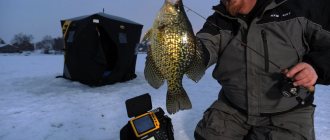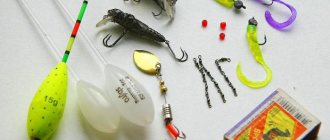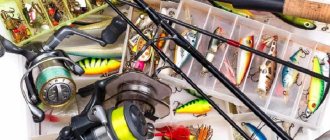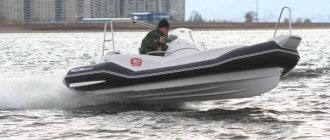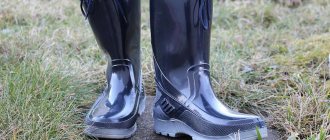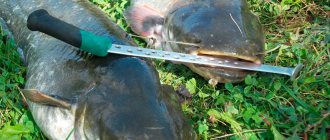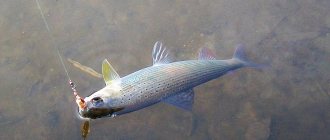For underwater photography, specialized cameras or devices equipped with waterproof boxes or cases are used.
Application area:
- scientific photography underwater;
- underwater amateur photography;
- industrial underwater photography of objects;
- filming for reconnaissance and military purposes.
Types of cameras for underwater photography
- Rugged compact cameras are usually designed for amateur photography. With their help you can take fairly high-quality photographs, video and sound at depths of up to 10-20 meters.
- Action cameras are typically used for filming video, although they can also take photographs. Their advantage is that, thanks to their small size and special fastenings, they can be easily attached to the head above the mask. As a result, such cameras can capture everything your eyes see as you look forward.
- Aquaboxes can be distinguished into two types: amateur and professional. Amateur ones are designed for shooting with point-and-shoot cameras; they are small, cheap and easy to use. Professional boxes are used with large SLR cameras or video cameras.
Before the purchase
When choosing a camera, you need to pay attention to an option that will satisfy not only your current goals, but will also be useful in the future. In particular, this concerns the depth of immersion. Budget models are not capable of providing deep immersion. This is not always necessary for fishing, since you can also fish in shallow water. In other cases, it is better to choose a more advanced option, where the box can withstand high pressure.
Since there is limited lighting underwater and the mask does not provide the necessary visibility, you need to choose a high-quality replacement. It is often very difficult to choose the best option, since it is difficult to predict the quality of the image in natural conditions. A strong flash will only scare away all the fish, and a weak flash will not record it. It's better to choose the average value.
Some cameras have multiple lenses to work simultaneously. This broadens your horizons, which a mask cannot, and the picture turns out to be more complete. The camera resolution must be high to capture fine details. When you have a high-quality camera, it should have enough space to store your pictures. You also need to pay attention to the display - it should be large and bright, which is important when visibility is limited.
Review of the best models
Canon PowerShot D30
One of the most powerful cameras for shooting underwater at a depth of up to 25 meters. The camera has a lens with 5x optical zoom. Built-in GPS can tag pictures with coordinates. For color correction there is a function for adjusting white balance, which is very important under water.
The camera is equipped with a unique and unsurpassed HS system, which allows you to maintain proper shooting quality at great depths in low light. The camera has a built-in image stabilization system. Light sensitivity can be set automatically or manually in the range from 100 to 800 ISO. Macro photography is supported at a subject distance of 1 cm.
Nikon Coolpix AW110
Allows you to shoot at depths of up to 18 meters. Shockproof. Has a lens with 5x optical zoom. Has a viewing angle equivalent to a 35mm 28-140 wide-angle lens. Autofocus for macro photography will work already at a distance of 1 cm from the camera to the object. The camera is equipped with an optical and electronic vibration reduction system and blur removal technology. Built-in GPS and compass. While taking pictures, you can instantly upload photos via WiFi to your mobile phone. Equipped with a 1/2.3-inch CMOS matrix with a resolution of 16 megapixels.
GoPro HERO4
Refers to action cameras. One of the few cameras that allows you to shoot in 4K resolution. Built-in HC system to improve image quality in dark places at great depths. With HERO4 you can go down to 25 meters. Sensor resolution 4000 x 3000 (12 megapixels).
Photography can be taken at intervals from 0.5 seconds to 60 minutes. The lens has an ultra-wide viewing angle. The device is equipped with WiFi connection. Optionally, it can be equipped with various sets of mounts, including those for underwater photography. With this set, you completely free your hands and gain maneuverability, without just vigorously shaking your head.
Nuances of underwater photography
The first thing a future underwater photographer should learn is to swim well, control time and depth, and monitor the air level. Carelessness in matters of safety has cost the lives of many divers.
Once the technical side has been mastered, you can take a waterproof camera and start photo hunting for marine life. Prepare for the fact that the first results will be far from perfect. Underwater photography has its own characteristics due to the physical properties of water.
Optical distortion
Due to its high density, water refracts light rays more strongly than air.
Therefore, objects at the bottom or in the water column appear 25% closer than they actually are. With this in mind, shoot close-ups as close as the focus on your underwater camera allows. To avoid edge clipping when taking close-up photographs, use a wide-angle lens.
The distance between the underwater camera lens and the selected target should not exceed 1-2 meters. From a distance of 5-6 meters without a professional flash, you will get a dark spot on a blurry background.
Light scattering
There are myriads of small particles of soil, algae and living organisms floating in the water. All this works as a barrier that absorbs and scatters light rays. With awkward movements, the diver can increase the density of the suspension so much that visibility drops to zero. To avoid this, swim carefully without touching the bottom.
When choosing a camera for underwater photography, look for models with a powerful built-in flash and the ability to attach an additional flash. To make the most of natural light, shoot underwater closer to the surface of the water.
Choose a sunny and windless day. Even small waves will stir up so much sand that filming will be problematic. Optimal lighting occurs at noon, when the sun is at its zenith. The closer to the surface the photographer is, the brighter and more natural the pictures will be.
Color absorption
The number of colors in the visible spectrum decreases every 10 meters of diving. First the red color disappears, then orange, yellow and then in order. Therefore, at a depth of over 30 meters it is necessary to use special equipment for underwater photography. Otherwise, all photos will have a rich green tint.
What to look for when choosing a camera?
Of course, it all depends on where you would like to take pictures.
In any case, I would like to purchase the best device, but my budget may not allow it. For example, if you will be shooting in a small and shallow body of water, then you can refuse a very deep-sea camera, and you are unlikely to need a GPS.
In any case, it is better to choose a camera with a wide-angle lens. But too good is also not good. For example, ultra-wide GoPro lenses produce significant geometric distortion at the edges of the image. In some cases this will interfere.
To check how strong the geometric distortions are in the model you choose, draw a sheet of paper with lines vertically and horizontally. Look at them through the camera display. If they are as even as in the picture, then everything is fine; if they bend a little in the corners, it’s tolerable, but if they are only even in the center, think about whether this is the kind of camera I need.
Extra options:
- Having autofocus is a must; most likely, you won’t be able to quickly focus on a fish swimming by, at least at first.
- Of course, it would be nice if the camera had an HC system; it improves the quality of shooting in dark and muddy water.
- If you are a fan of photographing sea crustaceans, worms and other inconspicuous little things, then be sure to pay attention to the macro photography function.
- Some manufacturers of underwater cameras equip them with touch screens for some reason. Please note that working with them underwater will be extremely inconvenient.
The main task
You can use any camera for underwater photography. The main thing is that it includes a cover that will protect against moisture penetration. Many manufacturers produce boxes, and some even offer ready-made shooting kits for diving. The cameras are also used for fishing, making it easier to find and catch fish when the mask does not provide a comfortable view when diving. They look like a cable with optics and a control panel.
The underwater camera allows the diver to take impressive pictures that cannot be captured with a regular camera.
Finding suitable equipment is complicated by choosing the necessary parameters. The buyer needs to combine the security of the device, optimal size and satisfactory quality. During operation, the camera should not be uncomfortable, as it can easily be lost under water. Optics is also important, because for fishing you need to quickly get a high-quality image of the object. The camera must cope with low light and sharpness conditions, while also quickly focusing on moving fish.
Buying a camera
Before buying a camera for underwater photography, it is advisable not only to read about it on the Internet, but also to consult with a specialist who may have already used a similar camera.
If this is not possible, then select several suitable models and go to the store to inspect and test them.
Buying goods from an online store is not a tricky business now, but don’t buy it just anywhere, choose a more reputable store so that the goods are in stock. Pay attention also to American online stores. Their prices are always much cheaper and it is possible that even with delivery the camera will be cheaper for you. Decent stores are B&H and ADORAMA. They are easily found by search engines.
The cost of underwater cameras for general use is relatively low and ranges around $200-400. If you already have a camera and don’t want to buy another one, then find a decent and suitable box for it. It will be much cheaper, although not as convenient and high quality. If you decide to shoot professionally, a DSLR-based system can cost you around $5,000. A well-equipped action camera can cost anywhere from $600 to $2,000.
Important characteristics for an underwater action camera
Shooting underwater is different from regular shooting, so you need to pay special attention to some characteristics of the video camera. Here, completely different parameters come to the fore than on land and in the air.
Of course, if you have a lot of money, then you can buy the latest model GoPro and not bother. She will cope perfectly with any tasks under water. But we will take a different route and look at the important characteristics that an underwater camera should have .
Aquabox or moisture protection
The first thing you need, of course, is an underwater case for your action camera. Nowadays they make aqua boxes for almost all action cameras, but not all come with them. Although, there is no problem ordering it separately, the main thing is that it is reliable. Also, many modern cameras have a sufficient level of moisture protection for diving to shallow depths without an aquabox.
Heat dissipation
The camera should not get too hot during operation, otherwise the aquabox in which it will be located will begin to fog up and the footage will be ruined. Many budget cameras suffer from this disease, especially from unknown manufacturers. The higher the video resolution you choose, the more heat the camera body will generate. When shooting in 4K there will be the greatest load.
Picture and stabilization
When swimming underwater it is very difficult to remain motionless, so having a stabilizer in the camera will not hurt at all. Also, for underwater photography, it is better to use cameras with narrower lenses that do not have a fish-eye effect. Underwater, all shooting is done at close range and a fish eye is completely unnecessary there. Therefore, it is worth choosing cameras with a viewing angle of 90 degrees, or with a function for correcting image distortion.
Photosensitivity
There is less light underwater, which greatly affects image quality. Therefore, it is advisable to select a device that takes good pictures with a weak light source.

